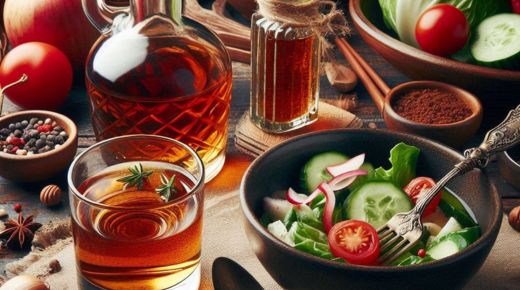Whiskey, often referred to as the “water of life,” has a rich and complex history that spans centuries. From its humble beginnings in ancient distillation processes to the wide array of modern whiskies enjoyed today, the evolution of this spirit is a fascinating journey through time, culture, and craftsmanship. In this article, we’ll explore the evolution of whiskey, tracing its path from traditional Scotch whisky production to the modern, innovative approaches that have reshaped the whiskey industry.
1. The Origins of Whiskey
The exact origins of whiskey are difficult to trace, but it is widely believed that the practice of distilling grains into spirits began with the monks of Ireland and Scotland around the 12th century. These early distillers adapted the knowledge of distillation techniques brought to Europe by traders and monks who had traveled through the Middle East, where distillation was originally used for making perfumes and medicinal tinctures.
The name “whiskey” itself comes from the Gaelic term “uisce beatha,” which means “water of life.” Over time, this was anglicized to “whisky” in Scotland and “whiskey” in Ireland. The production of Scotch whisky and Irish whiskey became central to both nations’ cultural identities, and each developed unique styles that remain popular today.
2. The Rise of Scotch Whisky
Scotland’s contribution to the evolution of whiskey cannot be overstated. By the late 15th century, Scottish distilleries were producing whisky on a larger scale, and it quickly became a staple of Scottish society. Scotch whisky, made primarily from malted barley, evolved through centuries of experimentation and refinement.
In the 19th century, Scotch whisky underwent a significant transformation. The invention of the column still, also known as the Coffey still, revolutionized whisky production by making it more efficient and allowing for the creation of lighter, smoother whisky. This period also saw the rise of blended Scotch whisky, which combined single malt whiskies with grain whiskies to create a more approachable product. Famous brands like Johnnie Walker, Dewar’s, and Chivas Regal grew in popularity during this time, helping Scotch whisky become a global phenomenon.
Today, Scotland produces several distinct types of whisky, including single malt, blended Scotch, and grain whisky. The country’s whisky industry remains a symbol of tradition and craftsmanship, with strict regulations governing the production process to maintain quality.
3. The Impact of Irish Whiskey
While Scotch whisky grew in prominence, Irish whiskey also played a crucial role in shaping the history of whiskey. Irish distillers were known for their triple distillation method, which produced a lighter, smoother spirit than their Scottish counterparts. By the 19th century, Ireland was the largest producer of whiskey in the world, with distilleries like Jameson and Bushmills leading the way.
However, the Irish whiskey industry faced significant challenges in the early 20th century, including the Irish War of Independence, Prohibition in the United States, and competition from Scotch whisky. These factors led to a decline in production and a shrinking market. Fortunately, Irish whiskey has experienced a resurgence in recent years, with brands like Jameson, Redbreast, and Teeling revitalizing the industry and introducing new styles and flavors to modern consumers.
4. The Emergence of American Whiskey
Across the Atlantic, whiskey was also taking root in America. Immigrants from Scotland and Ireland brought their distillation techniques to the New World, where they began producing whiskey using locally available ingredients, such as corn, rye, and wheat. This gave rise to uniquely American styles of whiskey, including bourbon, rye whiskey, and Tennessee whiskey.
Bourbon whiskey, characterized by its use of at least 51% corn in the mash bill and aging in new charred oak barrels, became particularly popular in the United States. Kentucky emerged as the heart of bourbon production, and today brands like Maker’s Mark, Jim Beam, and Buffalo Trace are celebrated worldwide.
The 20th century saw the rise of Prohibition, a period between 1920 and 1933 when the production, sale, and distribution of alcoholic beverages were banned in the United States. While this dealt a significant blow to the American whiskey industry, many distilleries survived by producing “medicinal whiskey” or converting to other industries. After the repeal of Prohibition, whiskey production resumed, and American whiskey began to regain its former prominence.
5. Whiskey’s Global Expansion
As whiskey evolved and spread across the globe, new regions began to develop their own unique styles of production. Japan, for example, has become a major player in the modern whisky scene, producing whiskies that are often compared to Scotch in terms of flavor and craftsmanship. Japanese whisky is known for its precision and attention to detail, with brands like Yamazaki, Nikka, and Hibiki gaining international acclaim.
In recent years, whisky production has expanded even further, with new distilleries emerging in countries like India, Taiwan, and Australia. These regions have introduced their own innovations and local ingredients, contributing to the diversity and global appeal of whiskey.
6. Modern Innovations in Whiskey
Today, whiskey continues to evolve, with distillers pushing the boundaries of tradition to create new and exciting products. Modern whiskey makers are experimenting with various factors, such as:
- Aging techniques: Some distilleries are using alternative cask finishes, such as sherry, port, or wine barrels, to impart unique flavors to their whisky. This has led to the rise of “finished” whiskies, which offer a richer, more complex taste profile.
- Grain experimentation: While traditional whisky is made from barley, corn, rye, or wheat, some modern distillers are experimenting with different grains to create new flavors. Distilleries are also reviving ancient grain varieties to bring a sense of history to their products.
- Sustainability: Environmental consciousness has become a priority for many distilleries, with sustainable practices being incorporated into production methods. From reducing water usage to recycling materials, whisky producers are finding ways to protect the environment while maintaining high-quality production.
It is a good idea to search for what kind of meals match with different drinks. See some recipes for salads and soups.
The evolution of whiskey is a testament to the enduring appeal of this beloved spirit. From the traditional Scotch and Irish whiskies that laid the foundation for the industry to the modern innovations and global expansion of today, whiskey has continually evolved while maintaining its cultural significance. Whether you prefer a classic single malt, a rich bourbon, or an experimental new release, the story of whiskey is one of craftsmanship, history, and innovation—a journey that continues to shape the world of spirits today.
Don’t forget to be responsible. Don’t drive after drinking alcohol. Take a drink and drive, or just rent a car with a driver (koli pod naem).

